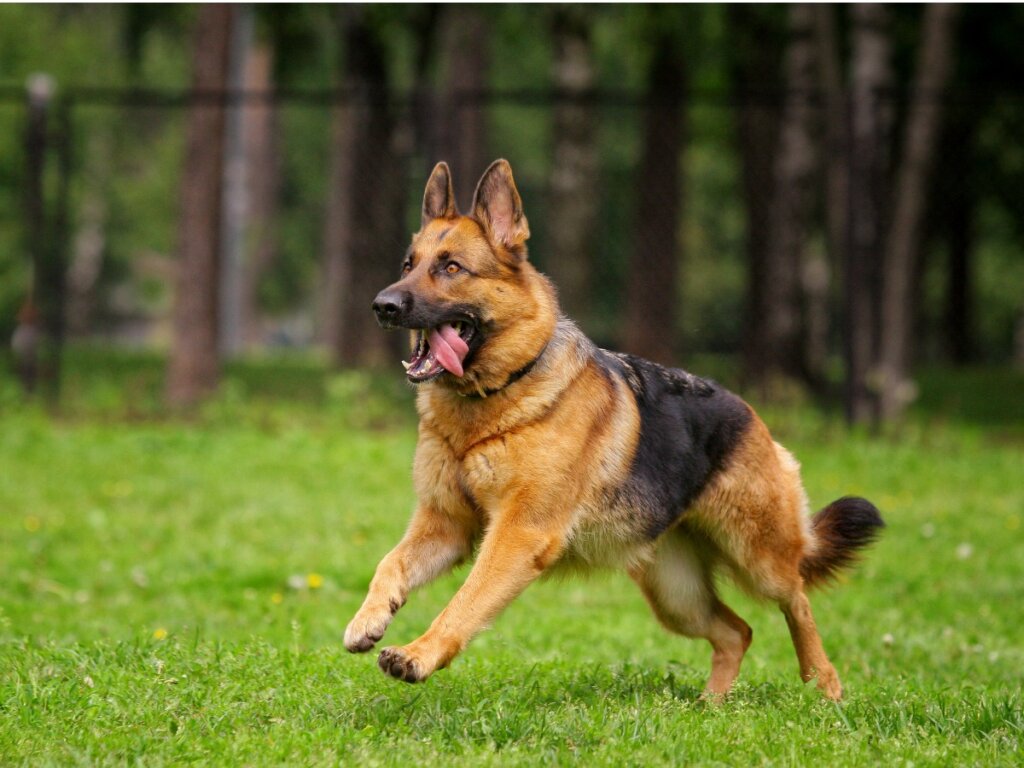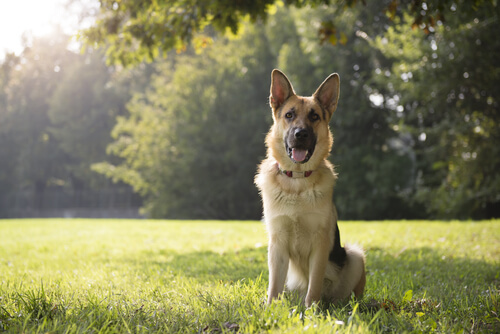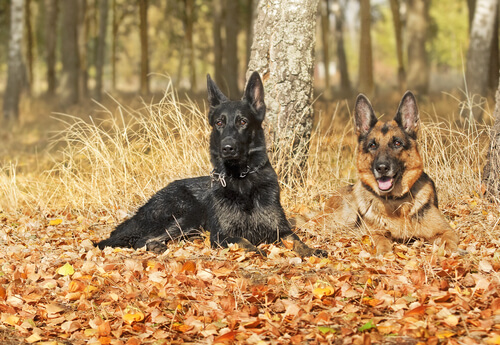German Shepherd Color Varieties

It’s normal to believe that the only German Shepherd color varieties are brown and black. However, there are many other colors that would make you think you’re looking at another breed entirely.
The world of German Shepherds is a broad one, as it’s a breed that has been used for several different tasks and has been with humans for many years. In this article, we’ll tell you all the German Shepherd color varieties, ones that are accepted by official organizations and those that aren’t. Don’t miss it!
Characteristics of the German Shepherd

The German Shepherd is a breed created specifically to protect and guide flocks of sheep. Back in 1899, they were looking for a flexible, resistant, and muscular dog that would be faithful and intelligent.
Because of the loyalty it shows to its owners, it was also exploited as a watchdog.
It’s a large breed that can reach 65 centimeters (25 inches) in height and 40 kilograms (88 pounds) in weight. It’s a well-proportioned dog, with erect ears, a muscular back and a hard, somewhat rough coat. The color of the coat ranges from black, brown, and gray depending on the area of the body you look at.
During the 10-12 years of life expectancy of the German Shepherd, you’ll enjoy living with a faithful, intelligent, and energetic dog. You need to provide them with a good dose of daily exercise, as well as proper and consistent training. Without the latter, the animal may end up becoming overprotective and distrustful of strangers.
German Shepherd color varieties
Let’s get to the crux of the matter. The truth is that there are many German Shepherd color varieties, although not all are accepted by international organizations such as the IFC (Fédération Cynologique Internationale).
Common and accepted colors
The most common German Shepherd coats are colors that you have probably seen at some time, but you haven’t stopped to think if it was a specific or random pattern. They are as follows:
- Black and tan: The best-known color, the tan is a dark brown color.
- Black and cream: Similar to the previous one, but with a lighter brown.
- Red and black: The brown color in the previous ones takes on a reddish hue.
- Black and silver: Although the distribution of the colors in the coat may vary, they usually have a silver tone in the ventral areas of the body and black on the back and head.
- Solid black: In addition to the black color that covers them completely, these German Shepherds are also larger than others of their breed.
- Sable: Characterized by having a more grayish hue. In this darker coat, we find some golden and brownish shades and some white patches.
- Dark sable
- Bicolor
Most uncommon German Shepherd colors
On the other hand, there are also some more atypical colorations that are usually the result of artificial selection or a random mutation that’s then continued by breeders. Let’s have a look at them in detail:
- Solid gray: Although the face and back are usually darker, these German Shepherds have a grayish coat, quite close to silver.
- Blue: This is a variety of dark gray that reflects light bluish tones when the light hits it.
- Liver or brown: This coloration is rather unusual, as they have white, black, and brown in patches. It’s common to find that the face and belly are white.
- Panda: Due to a random genetic mutation, a dog with white patches on the neck, chest, and face was obtained, which is where the name panda comes from. In addition, some of them also have blue eyes.
- White: This variety is characterized by the white of its coat and its smaller size. It’s also sought after for work in snowy environments.
Non-accepted colorations of this breed
When organizations say that a color isn’t considered to be pure or acceptable, what they mean is that they don’t consider them suitable for competitions. On any other level (shape, health, character, etc.) they are considered to be acceptable. The colors included in this section are as follows:
- Solid blue: Bluish coats, closer to gray than black.
- Fawn: Patches of black and brown.
- Pure red: No black at all.
- Black and white spotted: Similar to the “panda” variety, but without the pattern.
Do German Shepherd colors matter?

If you’re here because you’re looking for a particular color German Shepherd, it’s important to know that this factor is purely aesthetic. If you choose it for its image, you aren’t taking into account its personality or its health.
In addition, German Shepherds are breeds that, when purebred, suffer from a series of health problems that compromise their quality of life, such as hip dysplasia. So, if you’re looking for a companion and want to save a life, then adopt a dog of any kind, color, and size. They’re all equally worthy of your love and attention!
All cited sources were thoroughly reviewed by our team to ensure their quality, reliability, currency, and validity. The bibliography of this article was considered reliable and of academic or scientific accuracy.
- DEUTSCHER SCHÄFERHUND. (s. f.). FCI. Recuperado 28 de julio de 2022, de https://www.fci.be/en/nomenclature/GERMAN-SHEPHERD-DOG-166.html
- Willis, M. B. (1991). The German Shepherd Dog: a genetic history. HF & G. Witherby Ltd.
